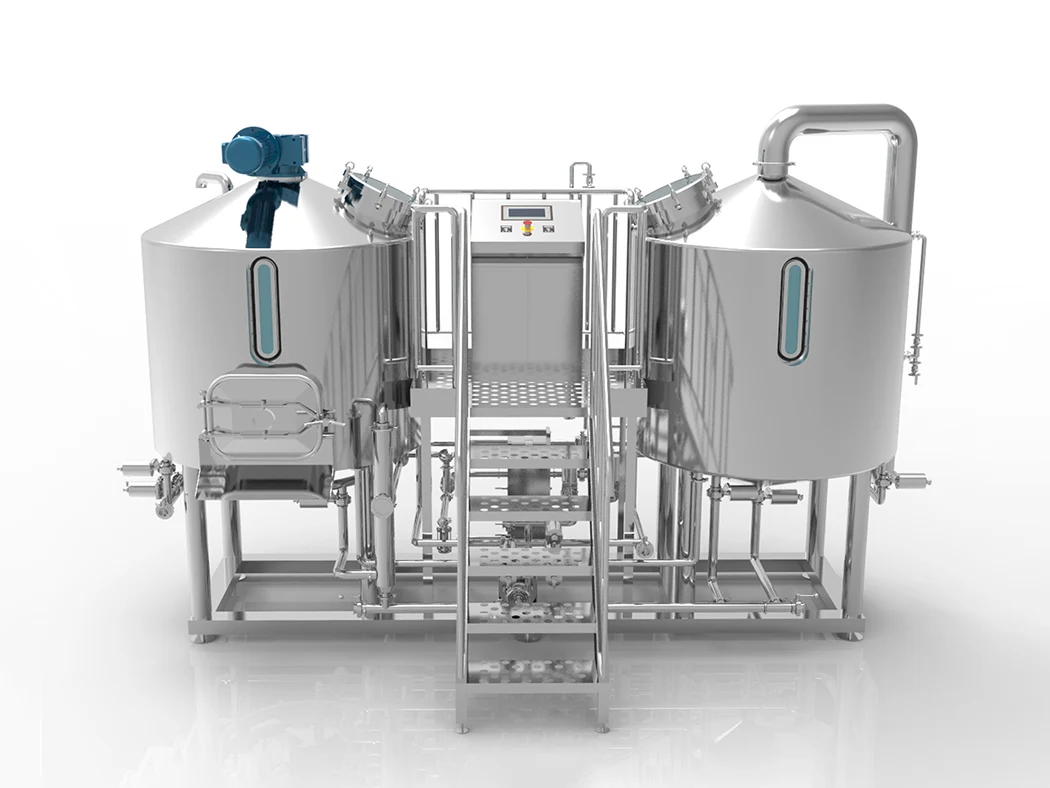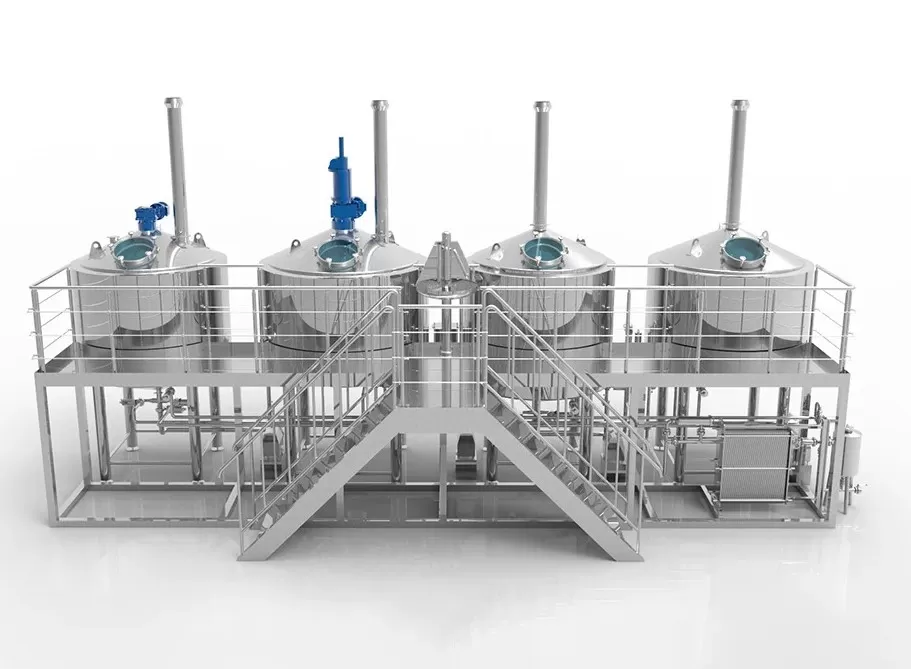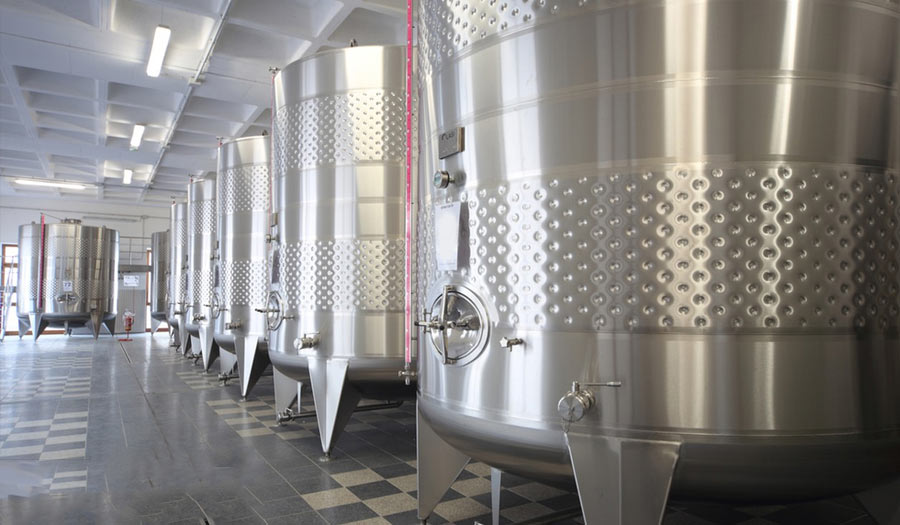In the entire winemaking process, fermentační nádrže play a crucial role. They are not only the vessels where grape juice is transformed into wine but also directly influence the wine’s flavor, quality, and stability. With the continuous advancement of modern winemaking techniques, an increasing number of wineries are choosing stainless steel wine fermentation tanks as their core equipment. So why are stainless steel tanks gradually replacing traditional oak barrels or concrete tanks to become the preferred choice for modern wineries? This guide will explore the reasons from multiple perspectives.
Unique Features of Stainless Steel Wine Fermentation Tanks
High Material Stability
Stainless steel is renowned for its excellent chemical stability. During winemaking, grape juice contains sugars, acids, and various active compounds. Unlike oak barrels or clay vessels, stainless steel does not react chemically with the wine, preserving the natural flavors of the grapes to the greatest extent.
Easy to Clean and Maintain
Hygiene is critical in winery management. Stainless steel has a smooth surface that resists residue and can be thoroughly cleaned using hot water, steam, or sanitizers, preventing bacterial growth and contamination. This is essential for ensuring consistent wine quality.
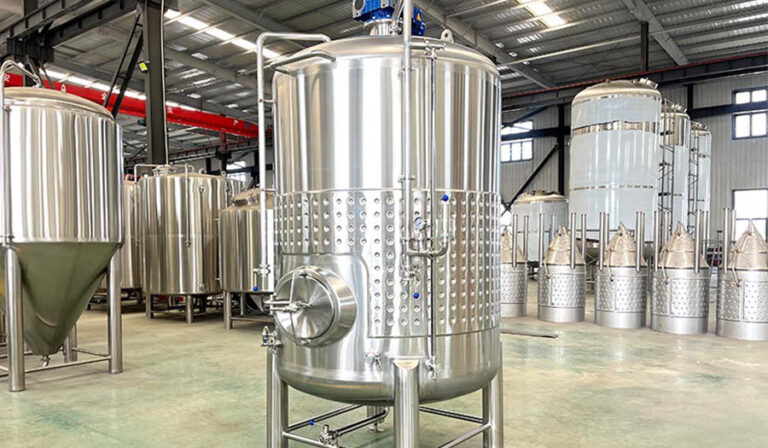
Excellent Temperature Control
Temperature control is a core factor during fermentation. Stainless steel wine fermentation tanks are typically equipped with cooling jackets or temperature control systems, allowing winemakers to precisely adjust the temperature so that the wine ferments in the optimal environment—an advantage traditional oak barrels cannot match.
Long Service Life
Stainless steel tanks are highly corrosion-resistant and require low maintenance, with a lifespan of several decades. Compared to oak barrels that need regular replacement or concrete tanks that are prone to wear, stainless steel offers a higher long-term return on investment.
Strong Adaptability
Whether producing red wine, white wine, or sparkling wine, stainless steel fermentation tanks are suitable for all. They do not impart additional aromas or flavors, making them ideal for wines that emphasize fresh fruit aromas and a pure, clean taste.
Funkce | Popis | Výhody |
High Material Stability | Stainless steel does not react chemically with the wine, preserving the grape’s original flavor | Ensures pure taste and consistent quality |
Easy to Clean & Maintain | Smooth surface, can be thoroughly cleaned with hot water, steam, or disinfectant | Prevents bacterial growth and reduces contamination risk |
Excellent Temperature Control | Equipped with cooling jackets or temperature systems for precise regulation | Provides the ideal fermentation environment for different wine types |
Long Service Life | Corrosion-resistant and durable, typically usable for decades | Lower long-term investment cost |
Strong Adaptability | Suitable for red wine, white wine, and sparkling wine styles | Meets diverse winemaking needs of wineries |
Comparison of Stainless Steel Wine Fermentation Tanks with Other Materials
Compared to Oak Barrels
Oak barrels can impart complex aromas and structure to wine, making them a common choice for high-end wines. However, they are expensive, have a limited lifespan, and are difficult to clean and maintain. In contrast, stainless steel tanks offer easier temperature control, preserve pure flavors, and are better suited for large-scale production.
Compared to Concrete Tanks
Concrete tanks provide good breathability and slow temperature changes, which can create a softer mouthfeel. However, they are hard to clean and prone to cracks over time. Stainless steel tanks, on the other hand, are durable, hygienic, and allow precise temperature control, making the fermentation process more stable and reliable.
Compared to Clay/Stone Amphorae
Clay or stone amphorae offer unique micro-oxidation effects and a traditional character, but they are fragile, costly, and unsuitable for mass production. Stainless steel tanks are cost-effective, sturdy, and durable, making them the mainstream choice for modern wineries.
Materiál | Výhody | Nevýhody | Stainless Steel Advantages |
Oak Barrel | Adds complex aromas and structure, enhances wine layers | Expensive, limited lifespan, difficult to clean | Pure flavor, precise temperature control, ideal for large-scale production |
Concrete Tank | Good breathability, stable temperature changes, smooth mouthfeel | Hard to clean, prone to cracks and leakage | Durable, hygienic, easy to clean, accurate temperature control |
Clay/Stone Amphora | Strong tradition, unique micro-oxidation effects | Fragile, high cost, unsuitable for mass production | Cost-effective, robust, and practical for modern wineries |
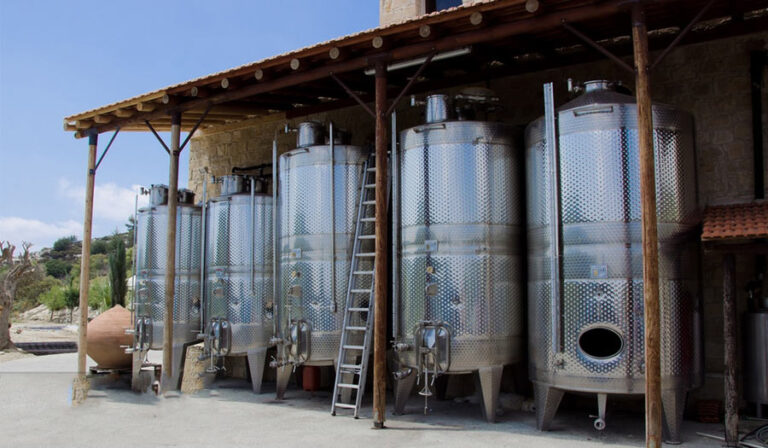
Reasons Why Modern Wineries Prefer Stainless Steel Wine Fermentation Tanks
Preserve the Natural Flavor of Grapes
Modern consumers increasingly favor wines with rich fruit aromas and a fresh, crisp taste. Stainless steel fermentation tanks avoid the oak flavors or overly woody notes imparted by barrels, allowing the grape’s natural aromas and characteristics to be preserved to the fullest. This is particularly important for wineries that aim to highlight the pure expression of their grape varieties. Maintaining the natural flavor also helps showcase the unique traits of different regions and vintages, making each wine more distinctive.
Improve Winemaking Control
Stainless steel tanks are equipped with advanced temperature control and oxygen management systems, enabling winemakers to precisely regulate fermentation conditions. This allows differences in grape ripeness between vintages to be balanced through process adjustments, ensuring consistent style and quality for every batch. Precise control also helps wineries minimize risks caused by environmental or climatic variations, forming the foundation of modern, fine-tuned production management.
Reduce Production Risks
Traditional fermentation vessels, such as oak barrels or concrete tanks, can be prone to incomplete cleaning, mold contamination, or temperature fluctuations, which may affect wine quality and safety. Stainless steel tanks, with their smooth surfaces, are easy to clean and sanitize, significantly reducing the risk of microbial contamination. Their corrosion resistance and strong sealing properties ensure a stable and safe fermentation environment, greatly enhancing overall production reliability.
Increase Production Efficiency
Modern stainless steel fermentation tanks often feature automatic racking, stirring, and temperature control systems, greatly improving winemaking efficiency. When processing large volumes of grapes, wineries can save labor costs, shorten fermentation cycles, and increase yield. High-efficiency production not only lowers overall operational costs but also allows wineries to respond more quickly to market demand, boosting economic returns and competitiveness.
Meet Modern Market Demand
With a younger global wine consumer base, light, fresh, and easy-to-drink wine styles are increasingly popular. Stainless steel tanks allow precise control over wine structure and mouthfeel, producing wines that appeal to younger consumers. Additionally, these tanks offer flexibility in winemaking, enabling wineries to adjust styles according to market trends and enhancing brand competitiveness.
Economic Benefits of Stainless Steel Wine Fermentation Tanks
- Výběr fermentační nádrže na víno z nerezové oceli not only improves a winery’s production efficiency and product quality but also brings significant economic benefits. Although the initial investment for stainless steel tanks is relatively high, they are durable and long-lasting, with a much lower long-term cost compared to barrels or clay vessels that require frequent replacement. Their simple maintenance reduces the time and labor needed for cleaning, sanitizing, and repairs, thereby lowering overall operational expenses.
- Stainless steel tanks feature efficient temperature control and automation capabilities, which can greatly enhance production efficiency. Automatic racking, stirring, and temperature control systems reduce the complexity of manual operations, allowing wineries to complete more fermentation batches in the same period and increase wine yield. For wineries with larger production volumes, this directly translates into higher economic returns and improved cash flow.
- Using stainless steel fermentation tanks also ensures stable wine quality. Consistent flavor and taste help strengthen brand reputation and market competitiveness. In today’s wine market, stable product quality means fewer returns, higher customer satisfaction, and long-term sales growth.
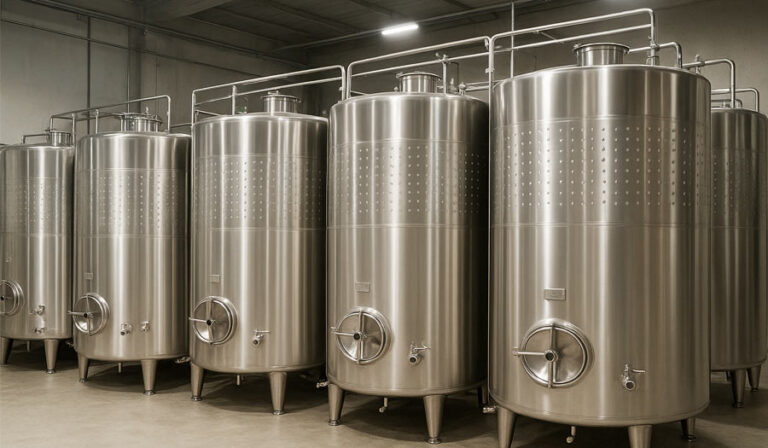
Future Trends of Stainless Steel Wine Fermentation Tanks
With continuous technological advancements, the future of stainless steel wine fermentation tanks is moving toward greater intelligence, automation, and energy efficiency, providing wineries with higher efficiency and more consistent wine quality.
- Intelligent Monitoring Systems will become a core feature of future fermentation tanks. Equipped with advanced sensors, winemakers can monitor key parameters in real-time, including temperature, sugar content, pH level, alcohol content, and fermentation rate. These systems also provide data analysis and trend predictions, helping winemakers adjust processes promptly to ensure each batch of wine achieves the desired flavor and style.
- Automated Management is another key development direction. Modern stainless steel tanks can integrate automatic racking, stirring, temperature control, and oxygen management systems, all managed through a software platform. This not only improves production efficiency but also reduces human error, ensuring stable wine quality and supporting large-scale production.
- Energy-Efficient and Eco-Friendly Design is gradually becoming an industry standard. New-generation fermentation tanks use energy-saving cooling systems and high-efficiency insulation, and can even incorporate solar or other renewable energy sources to reduce energy consumption and operating costs. This sustainable approach aligns with modern wineries’ environmental goals while enhancing brand image and market competitiveness.
Additionally, future stainless steel fermentation tanks will be more modular and flexible, allowing wineries to customize capacity and features according to production volume, wine types, and space constraints. By combining intelligence, automation, and energy efficiency, stainless steel fermentation tanks will play a key role in producing high-quality wines, improving operational efficiency, and supporting sustainable winery development.
Závěr
With their advantages in hygiene, safety, controllability, durability, and cost-effectiveness, stainless steel wine fermentation tanks have become the preferred choice for modern wineries. For wineries seeking high-quality, consistent production and market competitiveness, investing in stainless steel tanks is not just an equipment upgrade—it is a strategic step in brand development. As consumer expectations for wine flavor and quality continue to rise, stainless steel fermentation tanks are set to play an increasingly important role in the wine industry.

